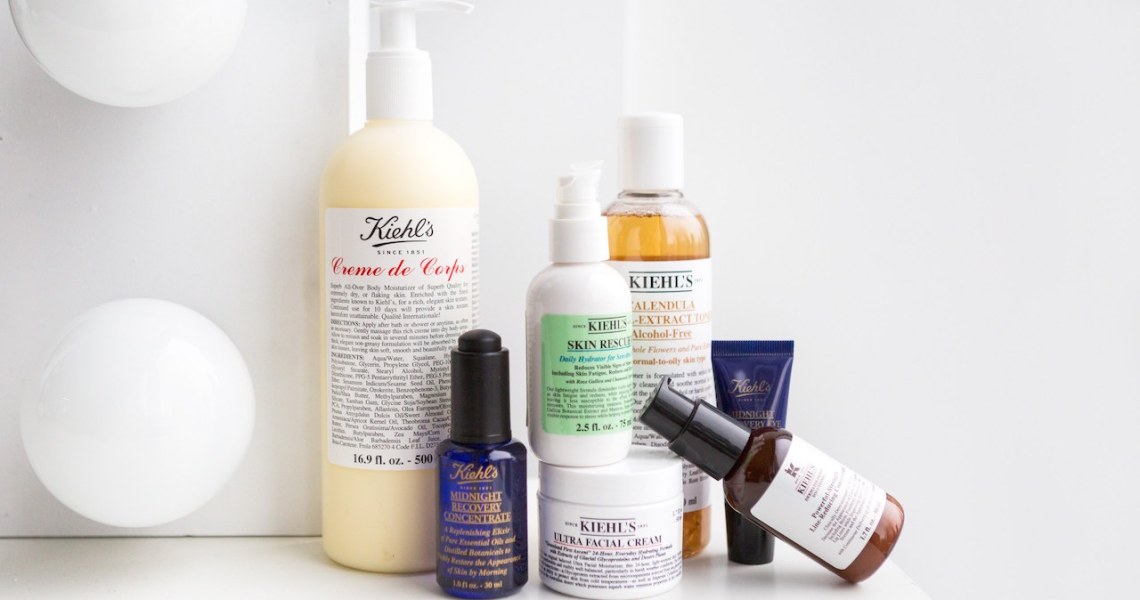Even before the boom of men’s skin-care brands, men have been stocking their medicine cabinets with Kiehl’s.
L’Oréal’s Kiehl’s is a unisex brand, but it has become a cult hit among men, who are currently responsible for 39% of the brand’s overall sales. On Wednesday, Kiehl’s launched its latest men’s product called Ultimate Razor Burn and Bump Relief — because the brand is unisex, it typically only launches one male-specific product each year. Although the male grooming category has received renewed attention from indie brands eager to elevate the category, Kiehl’s has managed to hold onto a strong customer base. Kiehl’s strategy is one that has been refined over its 169 years in business and is indicative of the core values of male customers, despite changing grooming trends.
“We’re direct and transparent, and we incorporate the right balance of efficacy, quirkiness and community,” said Sophie Lilley, Kiehl’s vp of marketing.
The brand’s packaging is simple, and the copy on the bottles is clear to understand; the products are also unscented. In its stores there are small touches, including a motorcycle in each, that makes the environment more welcoming of male customers.
The brand has also been purposeful in regard to where it merchandizes products. On its website, there is a clear men’s category tab. At Sephora, it’s one of the few brands that merchandise specific men’s products, based on knowing that women purchase 45% of the men’s products for the men in their lives, said Mel Green, Kiehl’s vp of integrated communications. A partnership with Equinox that began in 2009 has also been one of the most successful brand awareness opportunities Kiehl’s has developed, said Green. Although Equinox only represents a “very small” portion of sales (Equinox sells Kiehl’s in its boutiques), she said the above-the-line marketing has paid off.
“Almost every man I speak to in New York knows about Kiehl’s through their gym membership,” said Green. “Equinox is honestly one of the most powerful partnerships that we have.”
Kiehl’s is keen to explore more opportunities with Equinox, particularly around events; however, coronavirus has put those plans on hold indefinitely.
Ad position: web_incontent_pos1
Amid coronavirus, Kiehl’s has not furloughed or laid off any in-store employees or employees, though its 80 stores have been closed since March 17, said Green.
To better understand its male customers, Kiehl’s has crafted three male archetypes, each with distinct consumer behaviors and grooming preferences. There is Skin-Savvy Sean, who is between 18 and 25 years old and is a customer of high value but lower brand loyalty; this customer type makes up 22% of all male customers. Then there is Mainstream Mike, who is between 25 and 40 years old and has a more basic grooming routine and moderate loyalty; this customer type makes up 40% of all male customers. Finally, there is the Active Age Defender, who is 40 and older and has the most straightforward grooming routine; he primarily purchases from the dedicated men’s range of products and is the most loyal. This customer type makes up the remaining 38% of male customers.
These archteypes inform the brand’s social media strategy. Kiehl’s has 906,000 Instagram followers and over 3 million “likes” on Facebook. On social media, the brand focuses on its younger customers, and men make up about 20% of its social following. In response to coronavirus, Kiehl’s has started a weekly check-in with followers to find out how they are faring and what products they are using right now.
“When it comes to our male customers, they are scrolling [on Instagram], and they see everything, but they’re less active in engagement,” said Green. “We see a much higher conversion on Facebook.”
In Kiehl’s marketing, both men and women are featured in every photo campaign; they’re designed to be inclusive and diverse, and messaging focuses on “healthy skin for all,” said Green. There is also no separate influencer strategy for men versus women, and the brand works with about 600 influencers in many ways. For example, Kiehl’s is heavily dependent on influencer–attended events; it hosts about 12 every year, which see an average of 90 attendees. Only about three of those events are launch-related and in-store, while the rest are focused on various charities or community events, so as not to appear self-serving for the brand itself, said Green.
Ad position: web_incontent_pos2
Coronavirus has, of course, changed this and the brand has shifted to virtual events as of March 24, when the brand hosted an event for a vitamin C eye cream. Meanwhile, its new Ultimate Razor Burn and Bump Relief product was sent to about 90 influencers, both male and female.




